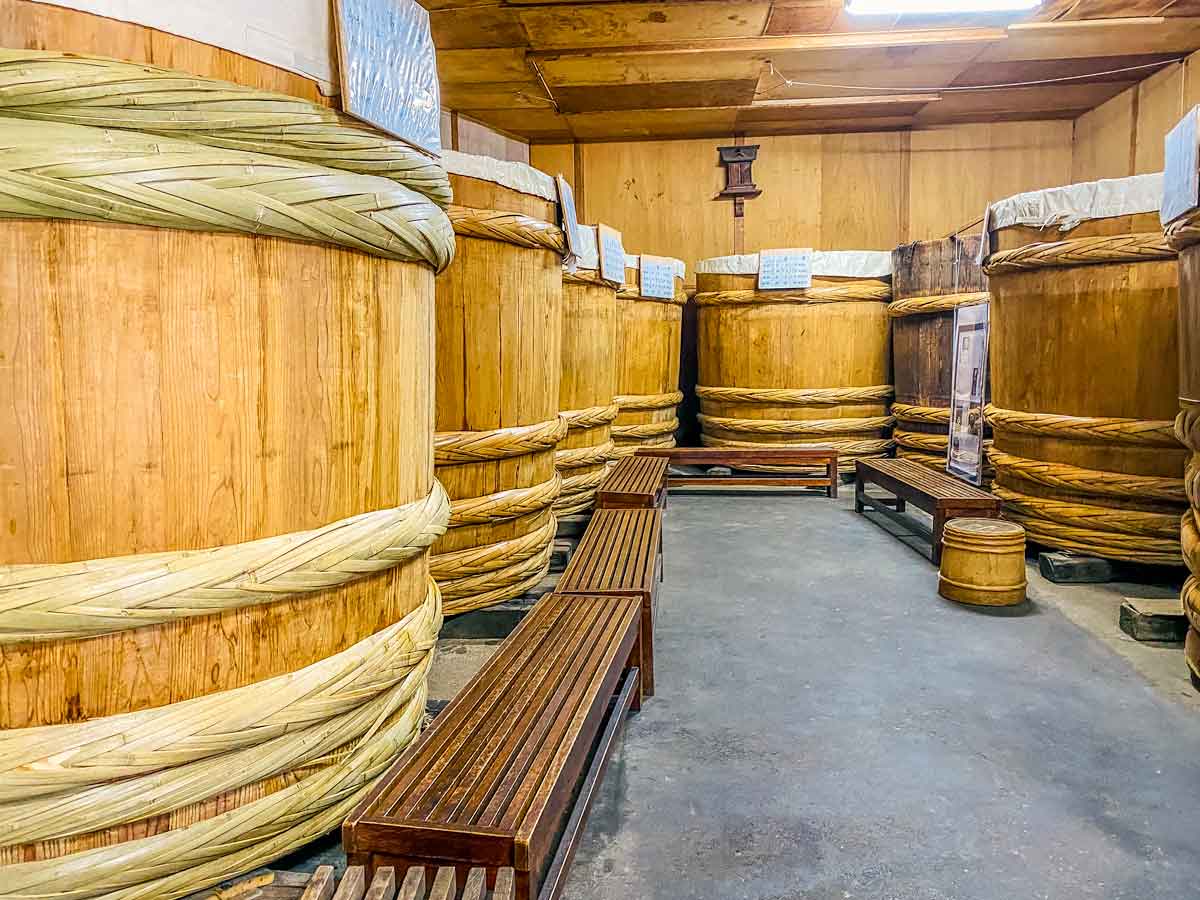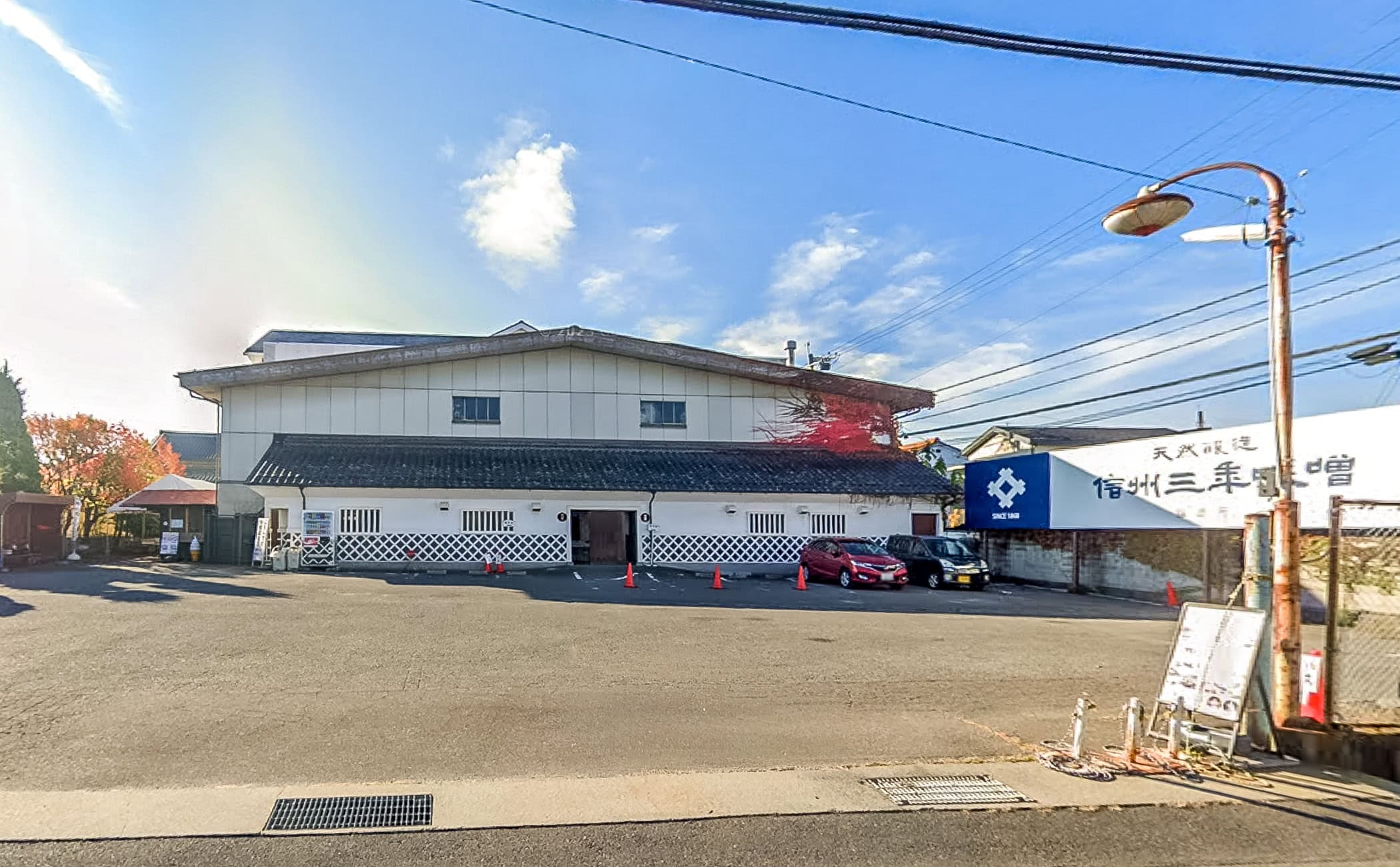When we travel through Japan we love to focus in on local cuisine and what each region grows and produces. Nagano produces almost half of Japans miso so we made sure we included some time at Iishi Miso in Matsumoto on a recent stay in the city.
Eating local is a great way to learn about a region while also supporting the local economy. Searching out the smaller restaurants and producers also means we get to discover delicious eats and drinks along the way.
What is miso?
Miso is a delicious fermented flavour paste. It is the principal ingredient in miso soup and it is used as a seasoning in other dishes. Like many fermented foods, miso is packed with important nutrients and gut friendly good bacteria.
The miso paste is made from soybeans, salt and a starter. The recipe itself is very simple but it is in the fermation and time where the magic happens. The starter for miso fermentation is called the malt, similar to beer. In miso production that malt is prepared most often with a grain such as rice, barley, or beans.
At year one the miso is a creamy colour (shiro miso), a caramel brown at the end of year two and by year three it is a deep rich red (aka miso). The flavour intensifies and refines as it progresses in the fermentation process but everyone has their favourite and for some uses white miso is preferred. For me that 3 year miso was a delicious flavour explosion.
History of Miso in Japan
In Japan today miso soup is consumed almost daily by most of the population. It truly is a cultural treasure with its prepartion and consumption dating back to the 7th century when it reserved for the nobility.
In the 13th century Buddhist monks began to prepare miso as soup and it became a daily staple in the monestaries plant based diet. Soon those working the land also prepared miso for their own consumption.
Then in the warring states period (14th and 15th century) feudal warlords embraced miso to feed their armies in preparation for victory in battle. Many regional variations evolved during this time.
It wasn’t until the 17th century that the Miso industry grew and Japans population started to use it more widely. Today it is rare for people to prepare their own miso paste from scratch although like sourdough it can be done with enough motivation and patience.
Why is Iishi Miso in Matsumoto worth visiting?
Iishi Miso ferment their product using traditional techniques. Less than 10% of Miso producers still do, the majority now use mass production and forced fermentation.

Nagano has a cool, dry climate and fresh spring water which makes it ideally suited to miso production. These factors mean the quality is excellent and the flavour rich and delicious which explains why Nagano is responsible for 46% of Japans miso production.
Iishi Miso is one of the few producers where you can visit, take a tour of the production facility to learn how it is made and try the product in its various forms. English speaking visitors are welcomed and there are daily tours also in English available.
Visiting Iishi Miso
You have two options if you want to visit, you can go on an organised tour that includes lunch, the tour and a pack of goodies or you can visit independently. If you are heading along on your own we do still recommend booking a meal a couple of days ahead of time on their website. It will ensure you get the full experience and we wish we had known to do that.
A storehouse is open to the public where you can see the fermentation setup. This is an option if there isn’t a tour to join at the time you are there. The free English tour usually runs twice a day around 11am and 1.30pm. There are information boards in English too.
There are three storehouses. The first with the year one miso ferment happening is where they hold the tours. The next warehouse is almost 100 years old and holds the 2nd year miso. The final storehouse is used for the year 3 miso and shipping but isn’t open to the public.
Lunch is available from 11am – 2pm and the tours are also in that timeslot so that is the window of time you are aiming for when planning out your day.
Our experience at Iishi Miso Factory
We initially thought we wouldn’t be able to do a tour on the day we went because their English speaking guide was away. It was disappointing but we could still try the miso and buy some to take home. The products for sale in the shop are processed and sealed so we had no problems declaring it when we brought it back into Australia.
While we were in the shop the women who had been talking to us spotted someone passing and he agreed to show us around. It turned out to be their director, Kosuke Iishi, who is the 6th generation of the family to run the business since it started in 1868. He speaks fluent English and we were very grateful to learn so much about miso, how it is made and the history of the family business from him.
We weren’t aware of the pre-booking process so we didn’t have the option of the full set menu in the restaurant that day. There was a casual dining option though and we did get to try the 3-year miso in the hearty pork miso soup which was delicious and the miso icecream is available at any time.
I bought 2 pots of the 3-year miso and planned to try making the homestyle miso onigiri and miso gyoza that I missed out on that day when I got home. I had made my own versions of both before so I had some idea where to start although I did end up drinking most of it as soup.
Getting to Iishi Miso
You will need to find your way to the Iishi Miso premises even if you are doing the organised tour as it doesn’t include hotel pickup. Matsumoto is a very walkable city, in fact its how we always get around and the factory is only 1.3km from the station so a 15-20 minute walk.
Matsumoto also has town sneaker buses that are distinctive by their Yoyoi Kusama inspired dots and that can reduce the distance you walk. Either pay the fare as you go or get a day pass.
Most likely you’ll be coming from, or headed to, another destination after lunch so for reference it’s about a 5 minute walk from the Matsumoto Museum of Art or a 20-25 minute walk to Matsumoto Castle.
The facilities don’t have obvious branding, not in English anyway so I’ll include a photo here so you know you have the right place.

Google Maps are accurate so just put in either Iishi Miso or 1 Chome-8-1 Uzuhashi, Matsumoto.
This is a foodie focused addition to a Matsumoto itinerary but if you decide to treat your taste buds to a stop at the miso brewery we hope you enjoy the experience as much as we did.
Other top experiences while in Nagano include a visit to the snow monkeys, enjoying winter snow sports at Habuka or Iiyama and exploring Matsumoto Castle, widely regarded as one of the top 3 castles in Japan.
